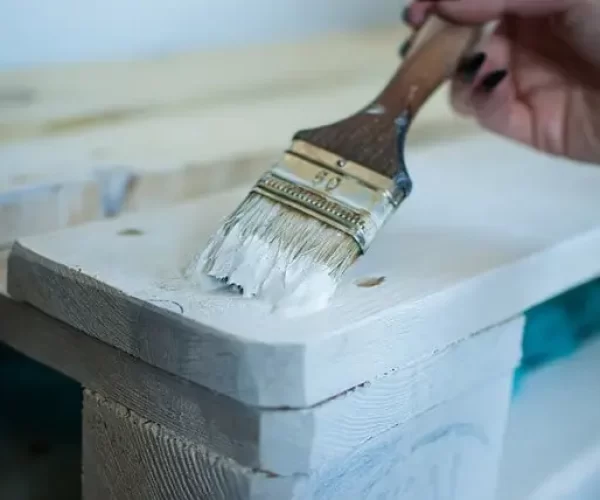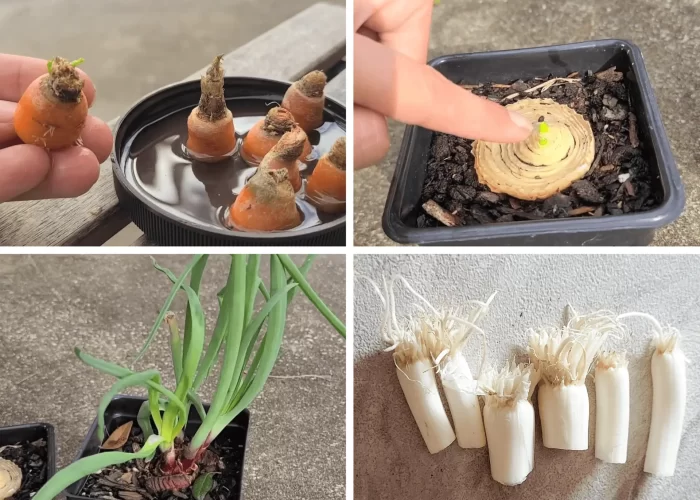Buying too much can sometimes lead to a lot of waste. However, repurposing items by finding new uses for them not only saves you money, but is also an earth-friendly way to make a difference. Simply turn old or unused items into something new and useful to significantly cut down on waste while also tapping into your creativity. If you love DIY projects or just want to live more sustainably, repurposing everyday items is a great way to make the most of what you already have.

I Repurposed an Old Greenhouse into a Plant Barrier
Take it from me, I’m the queen of repurposing everyday items. I started a food garden in 2022 and initially purchased a small greenhouse that I thought would stand up to the winds and rains we get here in Florida. Nope. It kept falling over, taking my container plants to the ground with it, even though I had it staked down with heavy weights. I didn’t want to throw the greenhouse away, so I decided to repurpose it into a barrier for my container plants. We had many pesky (okay fine, adorable) squirrels in our yard, and they’d wreak havoc on my plants. After creating the barrier, I no longer had issues with the pests – or, adorable squirrels. Check out the before and after photos below.


For the tarp, I ended up using it as a cover for my plants when the temperatures dropped into the 20s (yes, that actually happens in northern central Florida). Side note, if you’re into growing your own food or would like to start, check out this post on how to easily propagate (and grow) your own pineapple plants!
Benefits of Repurposing Everyday Items
There are numerous benefits to repurposing everyday items that line up with sustainable living practices:
- Reducing Waste: By giving new life to old items, we can significantly reduce the amount of waste that ends up in landfills.
- Saving Money: Repurposing often means you don’t have to buy new items, saving you money in the long run.
- Encouraging Creativity: Turning something old into something new requires creativity, making it a fun and fulfilling activity. I really do enjoy it, and I almost always involve my daughter, which teaches her sustainable living practices, and makes it fun for the both of us.
10 Everyday Items Perfect for Repurposing
1. Glass Jar Repurposing
I have soooo many glass jars, it’s not even funny. There’s definitely no shortage of glass jars in my house. From small jelly jars, to mid-sized jars, to large jars, I have them all. We try not to store our food in plastic containers, so the glass jars really come in handy. Not only do I use them for leftovers, flour, dried pasta, rice, or spices, I also use them for my ferments, like this fermented garlic honey, or for my homemade cleaners, soaps, moisturizers, etc. If you shop for food, you’re bound to have glass jars in either your pantry or fridge. Don’t toss them; once you’ve used up whatever food was in there, give it a good clean, remove the labels (or don’t), and save those jars! You can even use them as candle holders: add decorative sand to the bottom of the jar and place a tealight candle inside.

2. Wooden Pallet Upcycling
Have wooden pallets laying around? Disassemble them by using a crowbar to carefully take apart the pallet boards. Sand the wood to remove splinters and rough patches, and build your project! For outdoor furniture, assemble the pieces into the desired shape, like a bench or table, and secure it with nails or screws. To make planters, create a box shape and be sure to leave gaps for drainage.

3. Shower Curtain Rings
Use them to organize scarves in your closet.
4. Silica Gel Packets
Place in toolboxes to prevent rust on metal tools.
5. Empty Lip Balm Tubes
Clean them out and use them to store small amounts of jewelry or cash while traveling. And since you’re out of lip balm, check out this awesome homemade DIY lip balm recipe; perfect for the whole family and to give away as gifts!
6. Toilet Paper Rolls
Use as seed starters for your garden. Simply cut the rolls in half and make them shorter and more manageable. Make small cuts (about 1 inch) evenly spaced around one end of each roll. Fold those flaps inward to create a closed base. This helps keep the soil inside. Fill with soil, water it, then plant your seeds. Oh, and happy gardening!
7. Old Yoga Mats
Give them a good wipe-down with a natural cleaner, then cut into pieces to use as non-slip drawer liners.
8. Wine Corks
Use wine corks to create coasters, a corkboard, or even a small floor mat (if you have enough of them) by gluing them together.
9. Vintage Suitcases
Transform vintage suitcases into stylish storage units, a pet bed, or even a side table by adding legs. Repurposing everyday items is fun; at least your pet thinks so.

10. Food Scraps
Wait, what? Yes, instead of throwing away the root part of your vegetables like carrots, onions, green onions, or even sprouted old potatoes, plant them!
Carrots: Take the bottom 1/2-1 inch of your carrots, place them in shallow water, wait for them to sprout little roots on the orange carrot part, and new green growth at the top (haha, it’s hard to explain, so check out the photos below), then plant them in soil. You won’t get award-winning carrots, but you will get an abundance of carrot tops that you can use in your meals. The last time I did this, I made an entire batch of carrot-top pesto, and it was so delicious! Just replace the basil for carrot tops in your pesto recipe.
Onions: Plant the bottom 1/2-1 inch root part of your onions (root side down) in soil, and you’ll get an abundance of onion tops (similar to green onions, but with a stronger flavor). I made an onion-top pesto with these, and it was so good. I like pesto 🙂
Green Onions/Scallions: Take the bottom 1/2-1 inch root part of your green onions/scallions, and plant them in soil – root side down. After a few weeks you’ll have green onions that you can harvest for months or even years (by cutting them close to the base and letting them regrow). I still harvest green onions from scraps that I planted 2 years ago!
Potatoes: Have leftover potatoes that you couldn’t finish and now see sprouts on them? No problem, just plant them in soil sprout side up, and you’ll be able to harvest a new batch of potatoes in 80-130 days, depending on the variety and when they were planted.

Of course, in order for this to work you have to stay on top of watering, fertilizing (organically with compost and/or worm castings), making sure they have enough sunlight and love, and that’s pretty much it. Mother Nature does most of the work. Check out these budget friendly gardening hacks for more inspiration.
Final Thoughts
Now that you’ve seen the potential of repurposing everyday items, I encourage you to start your own projects and share your creations in the comments below. What have you repurposed recently? Sharing your success stories will inspire me and hopefully others to join or continue the movement towards creative and sustainable living 🌿.




